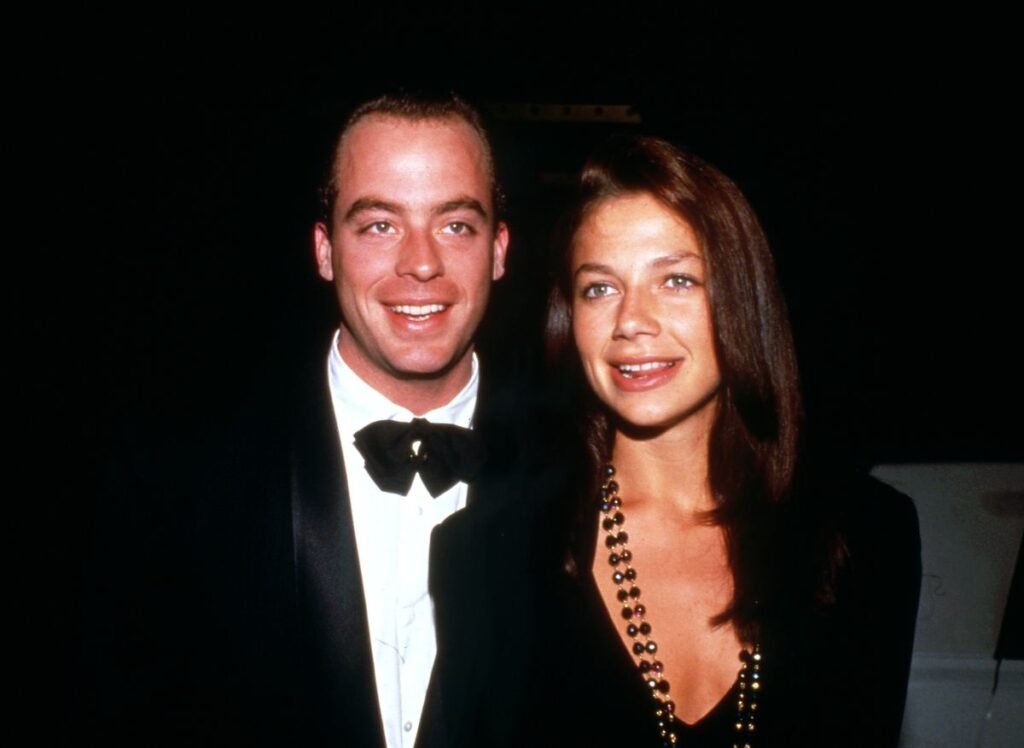This teen idol from the 1970s became well-known as a heartthrob before spiraling out of control due to addiction and legal issues. View the eye-opening images of his age-related metamorphosis that astonished social media followers.
At the height of his popularity, this adolescent idol from the 1970s was adored for his good looks and carefree charisma; he was the subject of magazine covers and left fans in awe. However, beneath the dazzling exterior lay a young celebrity in struggle, which ultimately resulted in an addiction spiral.

Decades after his turbulent voyage, social media followers have been taken aback by fresh images of the erstwhile heartthrob sporting a rough beard and gray hair. Watch the journey and development of former ’70s star Leif Garrett throughout time.

Leif Garrett’s Rise and Fall from Fame
Before being offered the chance to record music, Leif Garrett was a busy child actor in the early 1970s. This choice would take him to both extremes of his career.

He became one of the most known faces of the time as his popularity as a teenage idol soared. Garrett thought that part of his appeal to youthful followers was his approachable demeanor, which added to his success beyond his physical appearance.

He admitted that his acting career, which sold a ton of adolescent magazines like Tiger Beat and amassed a sizable fan following, prepared him for his success in music.
“So obviously part of it was because of the look, but if you can’t back it up with some talent, which is why you’d still be out in the public eye, then you can’t be there for just the way you look,” Garrett shared.

But there was a cost to fame. Garrett’s ascent to fame was marked by lavish tours, multiple magazine covers, and early drug and alcohol exposure.
His nearly instantaneous rise to fame offered him immediate success, but it also started him on a long road toward addiction and inner turmoil.

Garrett acknowledged that his fan base has always been devoted to him, supporting him through his highs and lows, in response to a question about living up to his adolescent idol image. “A lot of poor decisions were made. However, I didn’t receive the parental direction at the time that I should have,” he added.
He recounted how he relied on management, who pledged to treat him like a son, to take care of him for the majority of his time on the road without a parent, and he portrayed his mother as trustworthy.

His legal problems, which included his 2010 arrest for narcotics possession, culminated in his problems. The years of drug use were a blur, but he vividly recalled his worst experience: spending 90 days in county jail, which served as a stark wake-up call.

When asked what he was trying to escape by using drugs, Garrett admitted, reflecting on his issues with substance addiction, “Obviously, maintaining this lie of me being this musical talent. I sung, but I wasn’t totally myself.”

“I felt unheard and unhearded.” He went on, “Nobody seemed interested in hearing what I had to say. The demands of his record label frequently forced Garrett to adhere to a clean-cut, California surfer image that no longer reflected his reality, which conflicted with his desire to develop as an artist.

Garrett said that if he had had the option, he would have stuck to acting instead of being pushed into a creatively constrained music career. He had no idea that the choice to record an album would confine him for years, restricting his acting opportunities and placing him in a box he could not easily get out of.

The horrific vehicle accident that left Garrett’s buddy Roland Winkler disabled in 1979 was one of the most pivotal events in Garrett’s life. When Garrett unexpectedly ran across Winkler again decades later, in a 1999 edition of “Behind the Music,” Winkler cleared Garrett of any wrongdoing in the crash.

That was the purest form of realism. Garrett said, “I was unaware that I would be seeing Roland and that he would tell me that he did not hold me responsible, even though I held myself heavily and rightfully responsible for that.

Garrett said the experience was eye-opening, but he still found it difficult to completely let go of the guilt. He admitted that Winkler’s insight represented a major advancement in his own recovery.

Leif Garrett’s Life Now – Embracing Truth and Finding Peace
Garrett’s autobiography, “Idol Truth,” was published in November 2019. It offers an unvarnished glimpse into his life and is packed with candid moments, unbelievable interactions with celebrities, and uncommon personal images. After years of upholding a public character that didn’t always reflect his genuine nature, he wanted to clear the air with the book.

Garrett disclosed that he had retained distressing recollections and unsettling realities for more than forty years, in part because of the impact of his supervisors, the Scotti Brothers.
He joked that it might have been a calculated decision to write his narrative at a time when his career was almost at its lowest point, but he acknowledged that it had taken him a while to tell his experience. These days, Garrett lives a more sedate existence, far from the dizzying heights of his celebrity.

“When I reflect on my life, I see a lot of experiences that I have that other people never get to have. And for that, I’m appreciative. All I could have wished for was a different circumstance. I wish I had chosen wiser,” he thought to himself. Garrett also had to deal with the death of his father, which had a significant impact on him.

He regretted not having had the opportunity to get to know his father better and find the answers to unanswered questions. Garrett kept himself occupied with marketing his memoir, renovating his home, and thinking about how much he missed company.
He made fun of his love life frequently and said he went to the wrong places to find love, but he made it clear that he wasn’t actively looking for it on dating apps or at lonely bars; instead, he preferred to let things unfold organically.

I’ve reached a place in my life where I accept who I am. Firstly, I want to always be learning new things. We stagnate and eventually die the moment we give up on learning new things and conducting research. Even though I have bodily aches and pains, I still feel 18 within. Of course, I still have a lot of lust. He laughed and replied, “It’s great.

Garrett has not only found happiness but has also aged organically over time, displaying indications of aging that pleasantly shocked social media users who were accustomed to his hard-partying lifestyle.

“As usual, you look fantastic! I adored you as a teenager and as an adult in my fifties! “Remain the course,” someone said. A second person on social media wrote, “Wow, how awesome,” and a third person wrote, “Awesome.” Another person remarked, “I 


Leif Garrett’s transformation from a heartthrob of the 1970s to a man who has confronted his history head-on is an example of growth and resiliency. His remarkable metamorphosis, emanating from the inside out, enthralled onlookers by demonstrating that celebrity may be followed by genuine acceptance, wisdom gained, and a revitalized sense of self.



